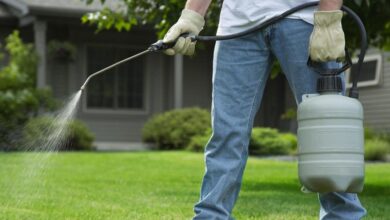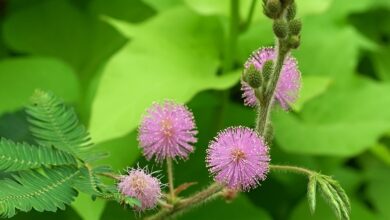Hortensia care

Hydrangeas are ornamental plants that are distinguished by their splendid colorful blooms, which is why they are one of the favorite species of landscapers and gardeners; as they provide exuberant beauty to green areas. Growing and caring for them is not as difficult as you think.
The hydrangea is a plant that could well be the protagonist of any garden , especially when the blooms begin; regardless of whether it is grown directly in the ground or in a pot (by clicking this link you can find some options to choose from). It is an ornamental plant that offers a show of natural beauty and color with its exuberant round and solid flowers.
Characteristics of hydrangeas
Hydrangeas can be found as a branching shrub and also as a climbing plant. Their sizes are very varied, so there are dwarf hydrangeas and varieties that reach several meters in height.
Its stems are not very woody, but robust and cylindrical. Most species offer toothed and opposite leaves that are distributed along the stem node.
Regarding the flowers, these develop from buds from the previous year, forming large corymbs that are arranged in several axes. Each of these axes supports an individual flower, which is usually relatively small.
Your main requirements
In general, for their development and growth, hydrangeas need certain environmental conditions. Starting with the temperature. Hydrangeas cannot withstand extreme temperatures: neither excessive heat nor frost. Therefore, for the flower buds to form and grow, it is essential to have a temperature below 18ºC, for at least six weeks. They should also not be exposed to direct sunlight.
Light is an important aspect that must be considered in the care of hydrangeas. This species cannot survive solar radiation all year round, so it is necessary for it to have shade at least during the hours of the day when the sunlight falls perpendicularly. However, it is a plant that should not be placed in dark places without lighting.
With regard to irrigation and humidity, it requires constant humidity and a large supply of water ; especially during the summer. However, waterlogging should be avoided; since this favors root suffocation and the appearance of diseases.

recommended substrate
Regarding the land for hydrangeas, it must contain a high amount of organic matter and the substrates must provide optimal drainage. The pH present in the soil must be acidic for the plant to grow and thrive. If our soil is not, it can be enriched with acid soil that provides the nutrients that the plant needs.
When do you prune hydrangeas?
You don’t have to be an expert gardener to know how to prune hydrangeas; a task that must be carried out periodically, since it favors the longevity of the plant and a more exuberant flowering.
The pruning of this plant includes cutting the stems in spring or late fall, this is done in order to prepare the plant with stronger stems for the next blooms.
What you should know about cultivation
Planting hydrangeas by cuttings is a simple technique to reproduce the plant. When flowering is coming to an end, we must take one of its branches and cut the flower with scissors. Then the leaves should be cut in half. Branches with three nodes should be chosen, which can be planted in the shade and in moist soil.
It is important to know when to plant hydrangeas if we want the plant to grow strong and healthy. In this sense, the most recommended time of year for this work is in autumn or early spring, since it is essential to be able to give the plant the necessary time to establish an adequate root system before it begins to flower. Likewise, the best time is to plant them in the morning or at the end of the day.
Choosing the appropriate space for its optimal growth is something we cannot ignore; since the hydrangea is a large plant that needs enough space to develop. For this reason, when growing it, it is advisable to leave a separation of one and a half meters in relation to other plants.

Important flowering data
The hydrangea flower can come in a wide range of colors. For this reason, we can find a wide variety of shades that include red hydrangeas, purple hydrangeas, pink hydrangeas, white hydrangeas and there are even hydrangeas in various shades of blue.
There is a trick to having blue hydrangeas in our home, it is a homemade hydrangea bluer. Only several iron nails should be inserted into the root of the plant, with this the soil acquires the necessary pH to obtain intense blue flowers.
Although most of this species blooms from early summer to fall, there is a variety called winter hydrangea. This interesting plant maintains its bloom during the winter season until early spring, when most other plants begin to bloom.
Many people do not know what to do to make hydrangeas bloom. In this sense, if we want the plant to offer its flowers throughout the season, experts advise adding specific fertilizer for the flowering of this species and also recommend removing dry hydrangeas. This helps the plant to channel its energy and not lose it with its dead flowers.
hydrangea diseases
Like all plants, hydrangeas are also vulnerable to pests and diseases. Among the main pests that usually attack these plants we have the cottony mealybug, the red spider, aphids and thrips.
Fungi are the most recurrent disease, causing gray-green spots, rotting of shoots and leaves, crooked stems, small leaves and weakening of the plant.
There are no excuses to enjoy the beauty of this multicolored plant, since hydrangeas can easily be grown in pots, in gardens, on balconies, terraces and even indoors in the shade.



